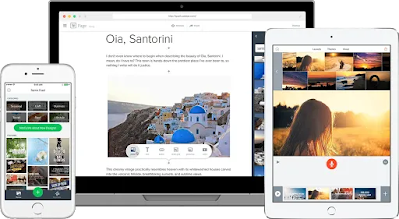Image Source: https://pixabay.com/photos/fortnite-computer-game-game-gamer-4129124/
So the past few weeks in my EDU 625: Integrating Technology into Learning course, we have gone over some absolutely amazing resources and content. The topics I honed in on were digital storytelling and games in learning. Gamification has come up a few times throughout my courses, but we went deeper into the pedagogy behind games and learning in this course more so than prior. I would like to reflect upon my experience thus far, and share some of what I learned and experienced over the past few weeks.
Digital Storytelling
I think I can say with confidence thus far, our review of digital storytelling may have been my favorite unit to date, throughout my entire M.Ed studies. Part of why I am an ID is because I have an eye for design, and digital storytelling is an art that catches my eye. We went through a breadth of technologies that we can use in learning that allow for digital storytelling such as PowToon, Prezi, Nearpod, as well as various tools for the creation of digital storytelling media. Prior to this class, I have used PowToon quite a few times and love the software. I have also used Nearpod before, and one of my favorite features of Nearpod is how we can engage learners during video presentations.
I love the video features of Nearpod. We can take a passive absorb activity in watching a video, and turn the video into an interactive do and absorb activity. Absorb activities are used to instruct learners on a subject by reading, listening, or watching; do activities transform information into knowledge and skills by allowing the learner to apply knowledge (Horton, 2012).
We can use the Nearpod video features to engage learners and add activities at specified timestamps. We can use this feature to "quiz" learners as they watch, or just ask learners silly questions like "do you prefer cats or dogs" when watching a video on cats vs. dogs. Just prompt learners and keep them in the video, get learners to connect to the material with their daily lives and see how it all fits in to the bigger picture. This is a level of engagement and interactivity that will help learners connect to the material.
But I wanted to learn something new, get the most out of my education and leave the comfort of what I already know; so instead of using Nearpod, PowToon, or creating/scripting/editing a video, I went a different route. And I was not disappointed! I discovered one of my new favorite technologies for digital storytelling: Adobe Spark.
Image Source: https://www.adobe.com/express/featureI had so much fun with Adobe Spark! I chose to use Adobe Spark because I just recently got my hands on a license to Adobe Creative Cloud from work. With Adobe Spark, you can make really engaging content quickly and easily. Simple web pages, videos, animated presentations, flyers -- so much can be done with Spark that is so easy to pick up and use. In addition to the ability to create engaging digital storytelling content, Spark can be used to make folios which for many professions and students in HigherEd is critical to their profession and studies. And there is so much more beyond this that Spark can be used for.
For a learning challenge, I did a quick little presentation on the history of coffee with the aforementioned Adobe Spark software. I love coffee. I affectionately refer to coffee as liquid therapy. My digital storytelling presentation on coffee was both informative, but also kind of a gag as the aim of the activity was to learn and use Adobe Spark. This learning challenge was more about process, not necessarily content. Feel free to check out my presentation and learn a few things about coffee, click to view. If you want to learn more about Adobe Spark, check out this video!
Games and Learning
So as a gamer in my downtime, you would think I would be all about adding video games to my learning lessons. To a degree that is true. But I honestly have very little experience with gamification/edutainment. And I am not so interested in gaming in learning as much as I am with engagement and interactivity in learning. There are a lot of parallels between learning and good game design requirements. According to Sorensen, Meyer & Egenfeldt-Nielsen (2011), successful computer gaming design must include the following: interactivity, adaption, strong identity, well-ordered problems, frustrating in a good way, cycle of expertise, depth and fairness. Many of these critical components to good game design are also critical to effective learning design (Sorensen, Meyer & Egenfeldt-Nielsen, 2011).
Image Source: Sorensen, B. H., Meyer, B., & Egenfeldt-Nielsen, S. (2011). Serious games in education: A global perspective. Aarhus: Aarhus University Press.
I have talked about how much I would love to see gaming in the classroom before on this blog where I went into detail on Minecraft: Education Edition and I still feel that way. But what I need to elaborate on is the importance of how critical it is that the gaming experience in learning be effective and not just a waste of time or distraction.
Here is my biggest hurdle with gamification: it is costly. Video games are both time-consuming to develop, and expensive to produce. Horton (2012) advises that we should essentially use gaming in situations where the ROI justifies said expenses, usually on something critically important. We also need to ensure that a game is appropriate for the tone of the content, as well as the audience. This all goes back to the ADDIE framework where we determine our audience characteristics.
As stated by Sorensen, Meyer & Egenfeldt-Nielsen (2011), games in learning is a controversial topic in academia. While I do think video games can be fun and amazing in education when properly developed and designed, I’m more about that interaction and engagement in a broader sense. On paper, it is quick and easy to think of video games as an easy path to interaction and engagement in learning, but there are myriads of other ways to foster engagement and create interactivity. At the end of the day, video games can be expensive to make. Either in time, or money -- or both. We need to be able to justify that time/cost to co-workers, bosses, clients, even sometimes family members.
But that doesn't mean we still can't use video games in learning. I do admit that when I came into this topic, I was far more against games in learning for the reasons I just mentioned. But I was exposed to some excellent gaming resources, and am now more neutral on the topic. I found an educational game creation platform called WISC-Online, which is a free OER resource. I found that WISC-Online was very intuitive and easy to develop with. I recommend this website for anyone interested in adding gaming to their learning. WISC-Online has a myriad of game types we can create, and they are all so quick and easy to develop.
For a learning challenge, I created a game on WISC-Online called "Slithery Snake". This game aims to test student knowledge on the topic of color theory, with my target audience being 4th and 5th graders. Slithery Snake is a relatively simple game based on the “Snake” arcade game. The learner answers the questions as quickly as possible by sliding the snake to the correct answer on the game board for each question. The quicker the student answers each question, the more points the student will score. There are also items called “snacks” on the board that will give additional bonus points.
Looking back again at Sorensen, Meyer & Egenfeldt-Nielsen's (2011) critical game design principles, my Slithery Snake color theory game includes the following principles: interactivity, adaption, well-ordered problems, frustration (in a good way), cycle of expertise, and depth and fairness. I challenge my learners to test their knowledge while also engaging learners by following basic game theory principles. The final product is a fun, educational tool that helps students learn in an interactive and engaging way. I named my game "Slithery Colors".
The ease in which I was able to develop this game, and how interactive and engaging the game is, really helped me open up more to the possibility of video games in learning. I am still skeptical of costs, but platforms such as WISC-Online are game changers in terms of time, cost, and versatility of use. I would recommend where possible, to have at least one activity in a course or lesson be a video game from a platform such as WISC-Online.
At the end of the day, I care deeply about engagement and interactivity -- video games are not the only route to that aim, but video games in learning are certainly one way to reach that destination. What do you think? Do video games have a place in your courses, classrooms, or lesson plans?
For now, that wraps things up. Be sure to check back in approximately two weeks from the date of this entry for my next blog post!
References:
Horton, W. (2012). E-Learning by Design: Vol. 2nd ed. Pfeiffer.
Sorensen, B. H., Meyer, B., & Egenfeldt-Nielsen, S. (2011). Serious games in education: A global perspective. Aarhus: Aarhus University Press.







No comments:
Post a Comment